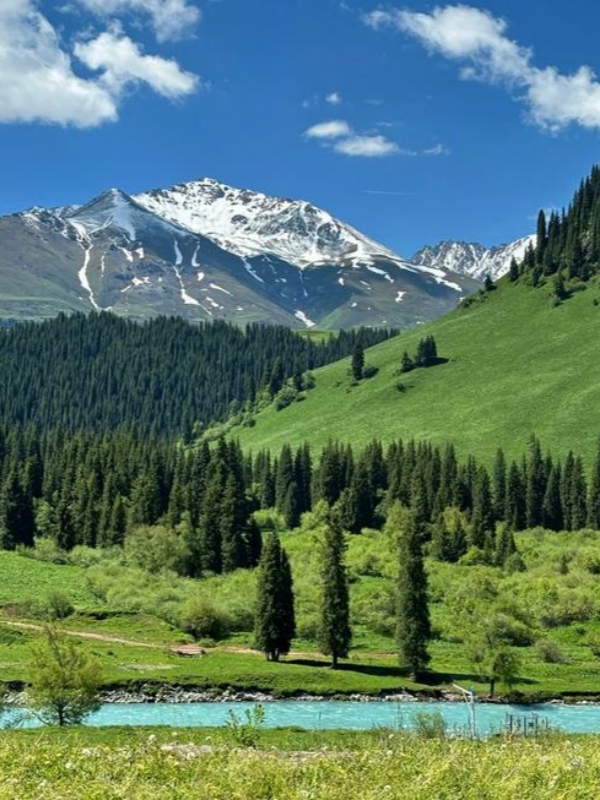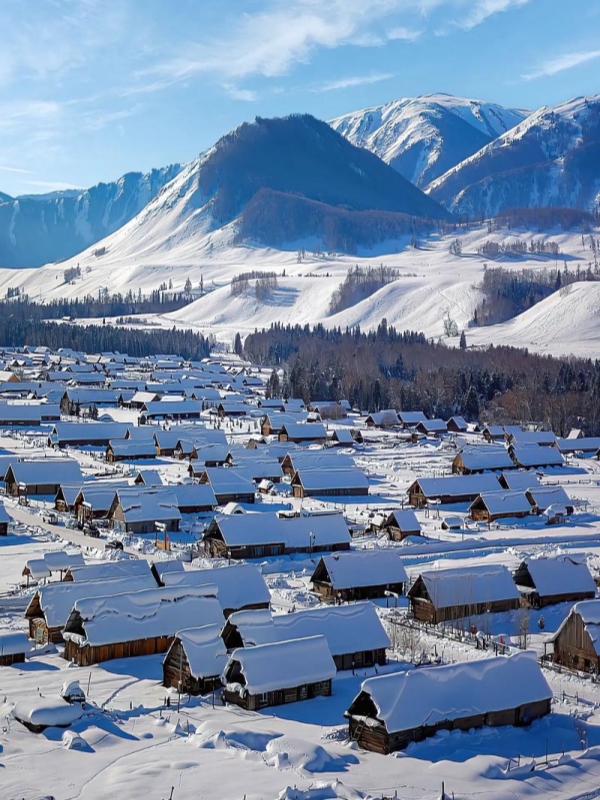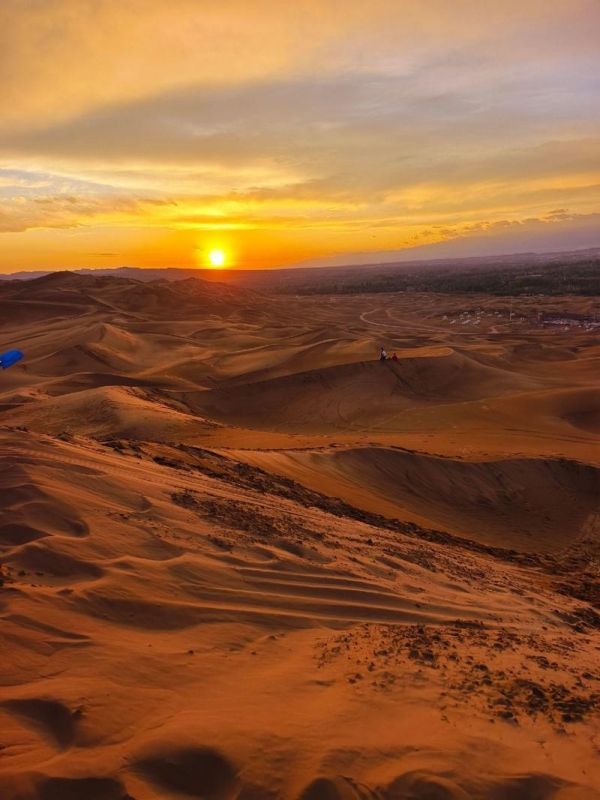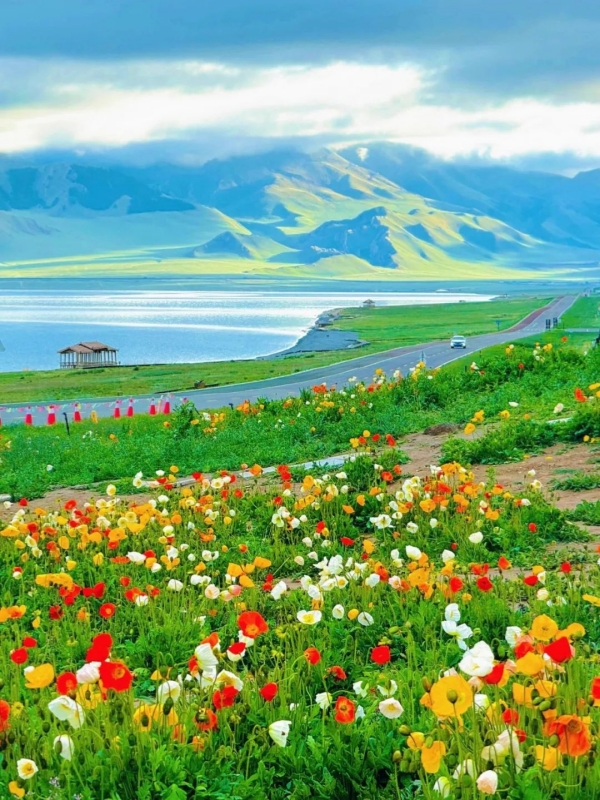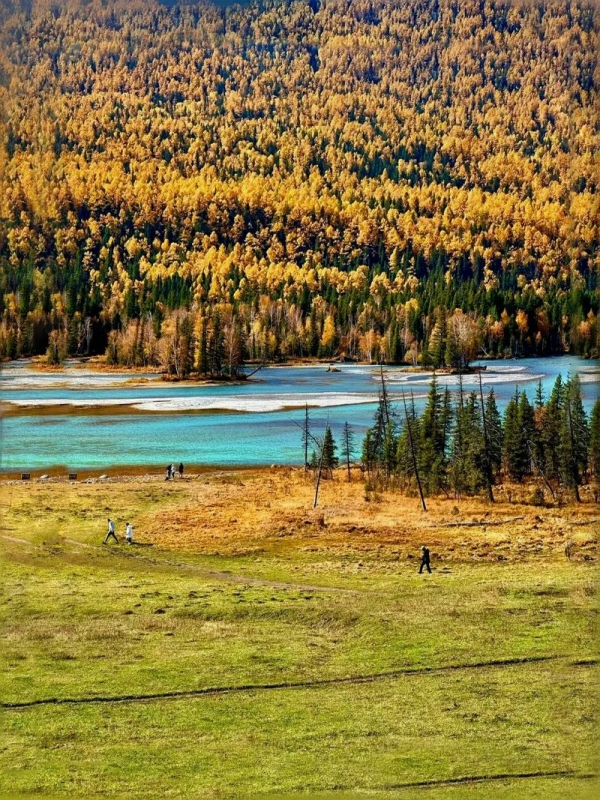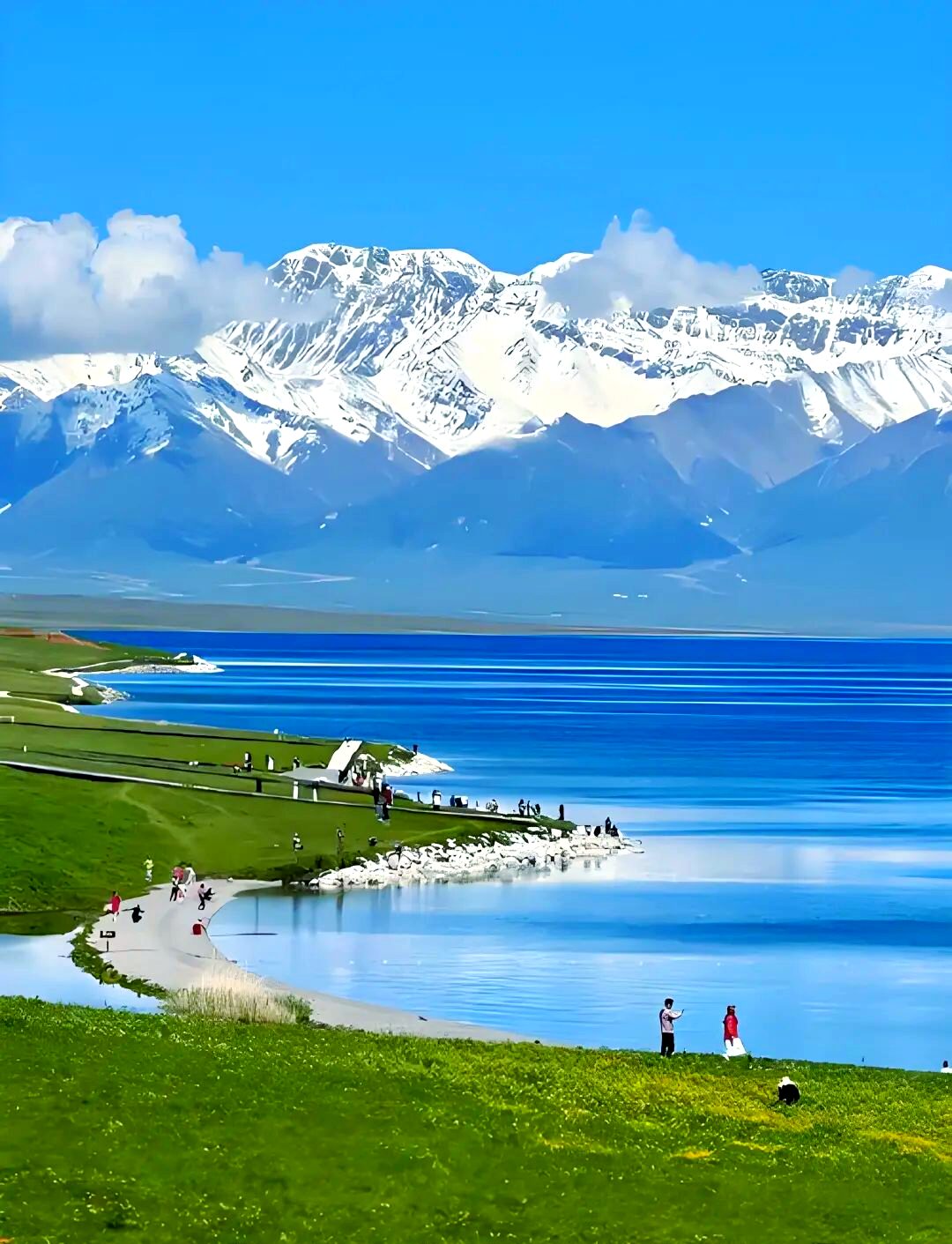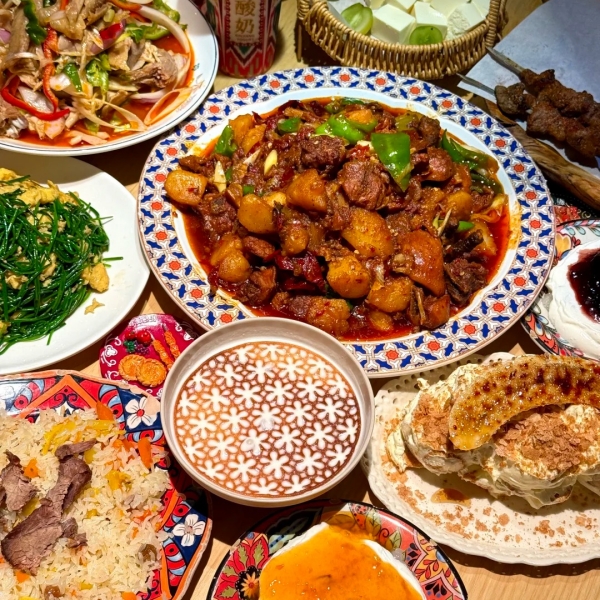
Snow mountains in winter, grasslands in summer.
Here's what nobody tells you: Xinjiang is roughly the size of Western Europe. Its climate stretches from scorching Gobi deserts to snow-capped alpine meadows—sometimes within a single day's drive. So when someone asks, "What's the weather like in Xinjiang?" the honest answer is: which part? And when?
That's exactly why I wrote this guide. Not another list of temperature charts. Instead, you'll discover how Xinjiang weather actually shapes your travel experience—what to pack, when to go, and which mistakes to avoid. Whether you're chasing Kanas's golden autumn, Kashgar's Silk Road charm, or the legendary Duku Highway, understanding the climate isn't optional. It's essential. Ready to decode Xinjiang's weather puzzle? Let's break it down together.
What Is the Weather Like in Xinjiang? Understanding the Climate Zones
- Forest of Xinjiang
- Village in the Snow
- Turpan Desert
Ask ten travelers about Xinjiang weather, and you'll get ten different answers. That's not because they're wrong—it's because they visited different parts of this massive region.
Xinjiang isn't one climate. It's three.
The northern zones around Kanas and Yili experience temperate mountain weather. Cool summers, brutal winters. The southern belt—Kashgar, Hotan—sits in a warm continental zone. Think hot summers, mild winters, and dust. Lots of dust. Then there's the eastern corridor, where Turpan holds the record as China's hottest spot.
But here's what really matters: the daily temperature swing.
I've watched tourists arrive in Urumqi wearing shorts and t-shirts because they checked the "average" summer temperature: 25°C. Sounds pleasant, right? What that number doesn't tell you is that afternoon ground temperatures can hit 40°C, while evenings drop to 15°C. That's a 25-degree swing in twelve hours. A local Kazakh herder once told me: "In Xinjiang, we don't trust the sky. We trust our layers." Smart man.
Why does this happen?
Continental climate. No ocean to moderate temperatures. Low humidity—often below 30%—means heat dissipates quickly after sunset. Add high altitude in many areas, and you've got a recipe for dramatic daily shifts.
Let me paint the picture more clearly about xinjiang weather with this regional breakdown:
| Region | Summer Temp | Winter Temp | Rainfall | Character |
|---|---|---|---|---|
| North Xinjiang (Kanas, Yili, Urumqi) | 15–28°C, short but glorious | –15 to –35°C, snow-covered for months | 300–400 mm annually | Alpine meadows, evergreen forests, four seasons |
| South Xinjiang (Kashgar, Khotan) | 25–38°C, intense midday heat | –5 to 10°C, surprisingly mild | Under 100 mm annually | Desert oases, dusty winds, extreme aridity |
| East Xinjiang (Turpan) | 35–45°C, China’s furnace | –10 to 5°C, cold but brief | Only 16 mm per year | Below sea level, intense heat radiation |
One more thing nobody mentions: UV radiation.
At Xinjiang's elevations, with thin dry air, the sun doesn't just warm you—it burns. Even on cloudy days, UV index regularly exceeds 10. I've seen tourists get sunburned through their t-shirts. Pack SPF 50+ sunscreen. Your skin will thank you later.
Xinjiang Weather by Month: When Each Season Shines (and When It Doesn't)
Timing your Xinjiang trip isn't just about avoiding bad weather. It's about catching the right weather for your goals. Each season offers something unique—and hides certain pitfalls.
Spring (March to May): The Awakening, But Watch for Sandstorms
Temperature Range: North: 5-20°C | South: 10-28°C
Spring in Xinjiang is like watching a giant wake up. Snow melts in the mountains. Grasslands turn from brown to green. And in late April, Yili Valley explodes into China's largest wild apricot blossom display.
Why spring works:
- Fewer tourists than summer (30-40% less crowding)
- Flight prices drop significantly
- Apricot blossoms in Yili Valley (late April–early May)—absolutely stunning
- Grasslands start greening up, perfect for early hikes
I spent an April in Yili photographing apricot blossoms. Sunrise was magical—pink petals against snow-capped Tianshan peaks. Then around 2 PM, the sky turned orange. A sandstorm rolled in, reducing visibility to 100 meters. I spent the next three hours hiding in a roadside restaurant, sand pinging against windows.
Pro tip: Always carry a dust mask. Not for viruses—for sand. The N95 variety works best.
Best for: Photography enthusiasts, budget travelers, anyone who enjoys unpredictable adventure.
Summer (June to August): Peak Season, Peak Heat, Peak Everything
Temperature Range: North: 15-28°C | South: 25-40°C | Turpan: 35-45°C
This is when Xinjiang truly shows off.
Northern grasslands—Nalati, Kalajun, Bayanbulak—transform into seas of wildflowers, and if you want to trace how this bloom stretches across the steppe, explore Nalati Grassland in Xinjiang: Where Sky Meets Steppe and Culture Breathes.
And here's something magical: the sun doesn't set until 10 PM.
Why summer dominates:
- All attractions open
- Grasslands at their peak (June-July)
- Kanas Lake crystal clear
- Duku Highway accessible (usually June–October)
- Extended daylight for maximum exploration
Best for: Road trippers, grassland hikers, photographers, anyone wanting "the full experience."
Autumn (September to November): The Golden Window Most Travelers Miss
Temperature Range: North: 5-22°C | South: 12-28°C
Ask photographers which season they prefer. Nine out of ten will say autumn.
September brings Kanas's famous golden transformation. White birch forests turn brilliant yellow. Morning mist rises from the lake. Hemu Village—with its Tuvan log cabins and smoking chimneys—looks like it belongs in a fairy tale.
Meanwhile, south Xinjiang enters harvest season. Grapes, pomegranates, Hami melons—markets overflow with sweetness.
Why autumn steals the show:
- Colors. Kanas birch forests in late September are breathtaking.
- Crowds thin out after August.
- Weather stabilizes (early autumn).
- Fruit season: freshest produce of the year.
- Photography conditions: soft light, dramatic skies.
Practical detail: Don't rely solely on weather apps. Local hotel staff often know conditions better than any forecast. Ask them.
Best for: Photographers, cultural explorers, anyone wanting stunning scenery minus summer chaos.
Winter (December to February): For the Bold, the Cold, and the Quiet Seekers
Temperature Range: North: -15 to -35°C | South: -5 to 10°C
Let's be honest. Winter in north Xinjiang isn't for everyone.
Kanas transforms into a frozen wonderland. Tuvan wooden houses buried in snow. Frozen lake stretching to the horizon. Silence so complete you hear your own heartbeat.
It's beautiful. It's also genuinely dangerous if you're unprepared.
Why winter attracts the brave:
- Kanas winter scenery: pristine, untouched, otherworldly
- Altay skiing: some of China's best powder snow
- South Xinjiang (Kashgar) remains mild and nearly tourist-free
- Authenticity: experience local life without crowds
At -25°C with wind chill, exposed skin risks frostbite within minutes. Your phone battery dies instantly unless kept warm inside your jacket. Camera batteries? Bring at least three spares and rotate them from inside pockets.
Best for: Winter photography specialists, skiers, cultural immersion seekers (south Xinjiang), solitude lovers.
Weather in Key Xinjiang Destinations: What to Expect Where
Xinjiang's vast geography dictates widely varying climate experiences. When planning your trip, consider the weather's impact on key regional attractions—from high-altitude lakes to scorching desert ruins.
Urumqi Weather: Your Gateway City's Mood Swings
Most Xinjiang journeys begin in Urumqi, the capital city situated at 800 meters elevation. It features four sharp, distinct seasons and serves as the primary base for exploring nearby regions.
Key Climate Features: Continental climate with rapid transitions. Winter lasts five months (Nov-Mar); summer is brief (Jul-Aug).
Attraction Note: The International Grand Bazaar offers indoor comfort year-round, regardless of extreme outdoor weather.
Local Secret: Summer sunsets at Red Mountain Park occur near 10 PM. Evening layers are essential even in July.
| Month | Average Temp Range | Key Weather Condition | Traveler Tip |
|---|---|---|---|
| January | -12°C (down to -25°C) | Snow covers streets | Pack one layer heavier than you think you need. |
| April | 8–18°C | Windy, dust storms possible | Carry dust protection, like an N95 mask. |
| July | 18–32°C | Blue skies, peak travel season | Bring a light layer for cooler evenings. |
| October | 5–18°C | Rapid cooling begins | Prepare for sudden temperature drops. |
Kashgar Weather: Where Desert Meets Silk Road
Kashgar is an ancient oasis city in one of the world's most arid zones, where the weather is defined by the surrounding desert. The heat is dry, intense, and requires careful attention to hydration.
Key Climate Features: Extremely dry; annual rainfall is only 60 mm. Heat is deceptive due to immediate sweat evaporation, leading to quick dehydration.
Attraction Note: The famous Sunday Livestock Market operates regardless of weather (rain, dust, or heat). Protection is key.
Cultural Timing: October (10~20℃) is widely considered the ideal visiting weather for exploring the Id Kah Mosque and Old City.
| Month | Average Temp Range | Key Weather Condition | Cultural Timing Tip |
|---|---|---|---|
| January | -5 to 5°C | Cold but sunny, rarely freezing | Enjoy the Old City's quiet winter charm. |
| April | 12–25°C | Pleasant, occasional dust | Monitor forecasts for potential dust events. |
| July | 22–35°C | Warm mornings, brutal afternoons | Focus sightseeing on mornings and evenings. |
| October | 10–22°C | Ideal visiting weather | Perfect for attending the Sunday Livestock Market. |
Kanas and Altay Weather: Alpine Climate, Rapid Changes
Located at 1,400 meters in the Altay Mountains, the weather around Kanas Lake is characterized by high variability and rapid change, reflecting its alpine nature — a perfect setup for exploring how such extremes define Xinjiang Kanas National Geopark: Where Glacial Lakes, Golden Forests, and Tuva Heritage Meet.
Key Climate Features: Brief, glorious summers and long, harsh winters. Mountain weather is unpredictable; rain gear is required even in summer.
Attraction Note: Peak autumn colors over Kanas Lake and the surrounding forests typically occur in mid-September.
The Kanas Trick: Due to high elevation, rapid shifts are common. A single June day can easily feature sunshine, sudden rain, and a rainbow within hours.
| Season | Typical Temp Range | Key Climate Personality | Gear Requirement |
|---|---|---|---|
| Summer (Jun–Aug) | 15–25°C | Brief but glorious, variable | Rain gear and a warm layer for evenings |
| Autumn (Sept–Oct) | 5–15°C | Colors peak mid-September | Add light winter gear by October |
| Winter (Nov–Apr) | –20 to –35°C | Heavy snow, sub-arctic climate | Expedition-grade down jacket and insulated boots |
Turpan Bonus: China's Hottest Corner
Turpan is mentioned separately due to its extreme climate, sitting well below sea level and acting as "China's Furnace." The heat radiation is intense.
Key Climate Features: July average is 40℃; record high is near50℃. Annual rainfall is a negligible 16 mm.
Attraction Note: The Flaming Mountains and the ancient Jiaohe Ruins are unique but require extreme heat tolerance during summer.
Best Visiting Window: April–May or September–October. Summer visits should be restricted to early mornings or late evenings.
| Attribute | Measurement / Condition | Warning / Advice |
|---|---|---|
| July Average | 40°C | Avoid midday visits; stick to mornings and evenings. |
| Record High | 49.6°C | Only visit if you tolerate extreme heat. |
| Ground Temp | Can exceed 70°C | You could literally fry an egg on the ground. |
| Rainfall | 16 mm annually | Virtually no rain. |
What to Wear in Xinjiang: The Layering System That Actually Works
Forget fashion. Xinjiang demands function.
The Non-Negotiable Rule: Layer Everything
I cannot stress this enough. One outfit doesn't survive a Xinjiang day. You need options.
Base layer: Moisture-wicking material. Cotton stays wet.
Middle layer: Insulation. Fleece or light down.
Outer layer: Wind and water resistant.
This combination adapts to 20°C temperature swings without requiring wardrobe changes.
Seasonal Packing Lists and Advice
| Season / Area | Key Items to Bring | Critical Advice / Common Mistake |
|---|---|---|
| Summer (Jun–Aug) | Quick-dry T-shirts (3–4), Long-sleeve UV shirt, Lightweight windbreaker, Breathable hiking pants, Wide-brimmed hat, Polarized sunglasses, SPF 50+, Comfortable hiking shoes | Mistake: Only packing summer clothes. Even in summer, northern grasslands drop to 12–15°C after sunset. Bring a fleece. |
| Autumn (Sept) | Similar to summer list, plus medium-weight fleece and warmer evening layers | Note: North and South Xinjiang diverge dramatically in temperature. |
| Autumn (Oct/Nov) | Light down jacket (essential), Thermal underwear (north), Gloves and beanie, Scarf for wind protection | Contrast: Kashgar Oct: Light jacket is enough. Kanas Oct: Full winter gear required. |
| Winter (North) | Expedition-rated down jacket (to −30°C), Thermal base layers, Waterproof snow boots, Wool/fleece-lined hat, Ski goggles, Balaclava, Insulated gloves, Chemical warmers | Reality Check: Batteries die instantly below −15°C. Keep electronics in inner pockets. |
| Winter (South) | Standard winter clothing | Temperatures rarely go below freezing; regular winter gear is sufficient. |
5 Xinjiang Weather Mistakes Every Traveler Makes (And How to Avoid Them)
- Urumqi
- Kanas Lake
- Kashgar
Mistake 1: Trusting "Average Temperature" Data
What happens: You see "Urumqi July average: 25°C" and pack summer clothes only.
Reality: That 25°C is a mathematical middle between 32°C afternoon highs and 18°C evening lows. You'll freeze after sunset.
Fix: Check daily high AND low temperatures. Pack for both extremes.
Mistake 2: Underestimating UV Radiation
What happens: Cloudy day. You skip sunscreen. Hours later, painful sunburn.
Reality: High altitude + dry air + minimal cloud cover = UV penetrates aggressively. Even overcast days measure UV index 8-10+.
Fix: Apply SPF 50+ sunscreen daily. Reapply every 2-3 hours. Wear UV-protective clothing.
Mistake 3: Ignoring Regional Differences
What happens: You pack for Urumqi weather, then head to Kanas. You're 8°C underprepared.
Reality: Different destinations = different microclimates. Elevation changes everything.
Fix: Research specific destinations. Check their particular weather forecasts, not just provincial averages.
Mistake 4: Packing for One Season
What happens: June trip. All summer clothes. First morning hike? Shivering.
Reality: Xinjiang days contain multiple seasons. 6 AM feels like spring. 2 PM screams summer. 9 PM acts like autumn.
Fix: Layer, layer, layer. Pack like you're attending all four seasons' worth of events in one day.
Mistake 5: Not Checking Sandstorm Forecasts
What happens: March/April trip to Kashgar. Beautiful morning. By afternoon, brown sky. Eyes stinging. Lungs irritated.
Reality: Spring sandstorms are predictable—forecasts exist. Checking them saves misery.
Fix: Monitor dust forecasts daily during March-May. Pack quality masks (N95). Bring eye drops and nasal spray.
Local Xinjiang Weather Hacks That Guidebooks Won't Tell You
These insights come from locals, not tourism boards.
Hack 1: Mirror what locals wear
See Uyghur vendors in long sleeves during summer? They're not wrong. Sun protection matters more than fashion. If locals layer up, you should too.
Hack 2: Exploit the endless summer daylight
Xinjiang summer sunset happens around 10 PM. Most tourists eat dinner at 7 PM and retire. Locals know better: evening hours—after heat breaks around 8 PM—are prime exploration time. Schedule a "second round" of sightseeing after dinner.
Hack 3: Double your water intake
Dry climate means invisible dehydration. You don't feel thirsty because sweat evaporates instantly. But your body still loses water rapidly.
Rule: If you normally drink 2 liters daily, drink 4 in Xinjiang. Don't wait until you're thirsty.
Hack 4: Protect electronics religiously
Sand infiltrates everything. Camera sensors, phone charging ports, laptop keyboards. Carry ziplock bags. After dusty conditions, carefully clean devices.
Hack 5: Know the heating schedule
North Xinjiang buildings use central heating. It typically activates October 15th and turns off April 15th. Visiting early October? Your hotel room might lack heating. Bring backup warmth.
Frequently Asked Questions About Xinjiang Weather
Q: What is the best month to visit Xinjiang?
The ideal month depends on your priorities. June and July offer stable weather and are best for first-timers, though expect peak prices and crowds. September is often considered the sweet spot, providing stunning autumn colors, pleasant temperatures, and fewer summer crowds. For budget travelers, April and May are viable, but sandstorms are possible during that time. General advice is to avoid August, as it is the domestic tourism peak season with maximum crowds.
Q: What is the climate in Xinjiang?
Xinjiang features a harsh continental climate characterized by extreme dryness (humidity frequently below30% and intense sunlight, often exceeding 2,600 hours annually. It experiences dramatic temperature swings, with daily differences of 15~20℃ being common. The region is highly diverse, ranging from the deserts of Turpan (reaching 45℃) to the alpine zones of Kanas (dropping to 35℃ in winter). No single description captures the entire region.
Q: Does it rain a lot in Xinjiang?
No, quite the opposite. Xinjiang is one of China's driest regions. Annual rainfall is extremely low: Urumqi receives only about 300 mm, Kashgar about 60 mm, and Turpan a mere 16 mm. The majority of precipitation occurs as light, brief rain in the northern mountain areas during summer. While a rain jacket is advisable for mountain hiking, visitors should not anticipate monsoons or heavy rainfall typical of other Chinese provinces.
Q: How cold does Xinjiang get in winter?
The coldness varies dramatically by region. North Xinjiang (Kanas, Altay) experiences sub-arctic conditions, with averages of 15℃ to 25℃ and extremes possibly hitting 35℃, necessitating expedition-grade equipment. In contrast, South Xinjiang (Kashgar) is surprisingly mild, with averages from 0℃ to 10℃, rarely dipping below freezing. Standard cold-weather clothing suffices for the south.
Q: When do sandstorms occur in Xinjiang?
The peak season for sandstorms is from March through May. The most affected areas include Kashgar, Hotan, the Turpan Basin, and occasionally Urumqi. These storms can severely reduce visibility, often to under 100 meters, and may last for several hours. Visitors traveling during the spring months should actively monitor local forecasts and pack protective gear, such as N95 masks and wraparound eyewear, for safety and comfort.
Q: What should I wear in Xinjiang in October?
October is a highly transitional month requiring a flexible layering approach. In early October, light down jackets, fleece layers, long pants, and walking shoes are sufficient. By late October, especially in North Xinjiang, visitors must be prepared for winter with a warm coat, thermal underwear, a hat, gloves, and potential snow gear. However, in South Xinjiang, a light jacket usually suffices, reflecting the dramatic regional climate differences.
Q: Is Xinjiang weather similar to other parts of China?
Not at all. Xinjiang's weather is unique compared to the rest of China. It is significantly drier than Tibet and experiences hotter summers (Turpan is China's furnace) and colder winters (Altay can be colder than Northeast China). The temperature swings are also more extreme than almost anywhere else in the country. Travelers should discard expectations based on experiences in typical Chinese weather patterns and prepare for a Central Asian steppe climate.
Q: Should I visit North or South Xinjiang?
Both regions offer distinct experiences. North Xinjiang (Kanas, Yili) is recommended for visitors seeking spectacular natural scenery, alpine landscapes, and grasslands, with the prime season being June to September. South Xinjiang (Kashgar, Hotan) is ideal for exploring Silk Road culture, Uyghur heritage, and vast desert landscapes, and can be visited year-round (avoiding midday July/August heat). A comprehensive trip typically requires combining both, budgeting ten or more days.
